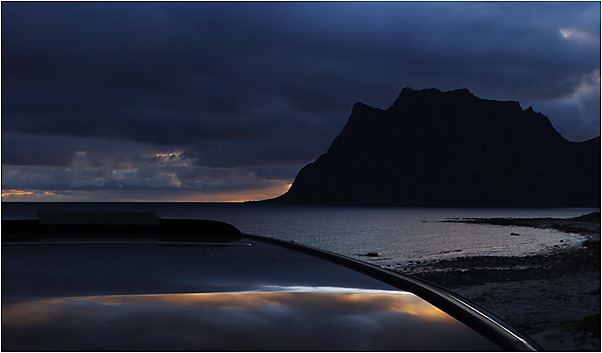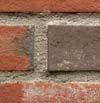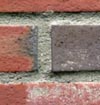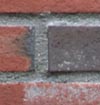
© Bjørn Rørslett/NN
By Bjørn Rørslett
(Review incepted 6 June, 2001)
 |
Close
encounter with the Midnight Sun © Bjørn Rørslett/NN |
Finally, Nikon D1X is upon us. Eager to learn its potential, I took my newly acquired D1X for a rough spin in the cold, wet Land of the Midnight Sun. Read on to learn more about this fascinating new digital picture-taking machine.
I set out for a field trip into the cold, wet coastal landscape of the scenic Lofoten Islands of northern Norway, bringing with me D1X and D1 bodies, a fair number of lenses, my Toshiba laptop augmented with a 20GB disk (a nightmare to install and set up under Win98SE), and all the flash cards and battery packs I could get hold on. This is Midnight Sun territory, if the bleak and chilly weather allows a glimpse of the sun.
Externally Nikon D1X is virtually identical to its older sister, the trustworthy D1. Only a discreet "X" is added to the D1 badge on front of the camera, and the red field on the handgrip now is light grey. In fact, the cameras are most easily distinguished by their dedicated carrying straps flashing prominent D1 vs D1X logos. They share battery packs, chargers, and other equipment, but the D1X goes one further to support recording of GPS data with each image.
I'm quite sure a number of forthcoming reviews will dissect the D1X and its operating controls into the finest possible detail. I for one prefer to focus on the camera and its handling and imaging potential, so most details are skipped here. On the rear side of the machine, a semitransparent cover for the LCD display immediately attracts attention (however, because I'm already using a similar hood for my D1, this is insufficient to tell the bodies apart). Beneath the cover is a much improved LCD panel which shows the entire image captured by the D1X (not cropped like D1) with user-controllable light intensity. You cannot use this display for assessing colour fidelity of your images, though, because it has a very cool, almost bluish, cast to its colour rendition. There are all sorts of added information which can be displayed as well, although getting to the most useful one, the histogram, means you have to wade though a fair number of subpages before finally getting your histogram displayed. However, the next time an image is monitored, the correct subpage (with histogram) normally screens so this is a minor nuisance only. Also, because the custum functions and other menu choices are given as text ands symbols on the LCD itself, there is no longer need to memorise terse custom function codes as on the D1.
Since I got the camera and a working beta of the Nikon Capture 2 software just before I left for Lofoten, there was scarcely any time to sort out problems prior to my departure. Not an ideal situation, I concede that, but what options did I have? I managed to get the beta up and running on my NT server and the laptop (under Windows 98 SE) and the first quick look of the new 8MB raw (NEF) files was highly promising. Colours were vibrantly rich and the added pixels on the CCD gave stunning image clarity and detail. In comparison, the D1 images looked positively grainy and unsharp, and colour fidelity even using Bibble 2.5a was clearly inferior to that rendered by D1X and Capture 2.0. Images can be recorded and tagged with either sRGB or Adobe RGB (1998) colour space. The camera is, unfortunately, shipped with sRGB as default, so ensure you select colour mode 2 (i.e., Adobe RGB) before commencing any critical shooting session.
Nikon chose a non-orthodox layout for the CCD of D1X, using 4024 by 1324 pixels. This allows of course the earlier pixel size of D1, viz. 2000 x 1312, as well as the higher resolution 3008 x 1960 (5.4 megapixels) outputted by the Nikon Capture 2.0 program. However, you can interpolate and re-arrange pixels any way you like, so Mike Chaney has announced an improved version of QImage capable of giving 4020 x 2624 pixel files, that is, a whopping 10.6 megapixel raw file to give a final 31MB (RGB) TIF. The raw (NEF) D1X files are 8MB, twice the size of D1 NEFs, but they can be compressed to 50-60% of this size by selecting the appropriate option on the D1X menus.
While Eric Hyman and Mike Chaney reportedly now work day and night to match their software to the D1X, I had to make do with the Capture 2.0 program. The release version will run only under Windows 98 SE and Windows 2000 and you need a new license number as well. I later got the release version and installed it on my laptop while keeping the beta for my NT boxes. There is also a simplified software (Nikon View 4.0) which I saw no need to install. It will provide a Photoshop plug-in for NEFs, though.
Capture 2.0 has some nifty features such as highly improved white balancing, allowing even fine adjustment of various types of fluorescent lighting, batch processing, firewire control of the camera, and the ability to work with all types of old and new data formats including 16-bit files and the compressed NEF mode of D1X. TIF files produced by Capture 2.0 have a very "clean" look to them with absolutely minimal noise and the colours are gorgeous indeed. Bibble will happily browse the new NEFs and display the thumbnails, but for the time being is quite unhappy with the new file format. I trust Eric Hyman to rectify this situation in a short while. The latest beta of QImage will, however, eat its way through the big 8MB NEF file to give no less than 4020 x 2640 pix (31MB worth of TIF) output. However, although the interpolation scheme undoubtedly works and is able to extract additional detail from the NEF, it adds a fair amount of noise to the image and the colours on my test images were flamboyant to the point of being completely oversaturated and unrealistic. This situation may improve when the D1X is colour-profiled by Mike Chaney.
I ran my usual "brick-wall" tests with D1X attached to my old, venerable Nikkor 300/2.8 ED-IF. The whole assembly was firmly kept into postion atop my Sachtler tripod (DA-75 L) by the Burzynski head. At the same time I shot with the 300 and my D1, and compared the outputs from D1X and D1 to similar shots taken with my 300/2.8 and the F5 on Fuji Velvia. All shots were done at f/5.6. The tripod was not moved between the shootings so the final image magnification would be identical in all cases to allow meaningful comparisons between each image. The RVP image was scanned at 2700 dpi with my LS-2000 and also scrutinised under 40X magnification using my Nikon stereomicroscope to evaluate the resolution attainable from the film (which, incidentally, may not be what even the best scanner in the world can extract from the film).
A high number of people refuse to accept that film is to be eclipsed by digital media. Let them enjoy their dream world while it lasts. Open-minded people could do well to just take a look of the images below (click the thumbnails to open the corresponding image in its own window). Absolutely no image processing (unsharp masking or whatever) has been performed except for cropping a tiny section of the image frame and saving the resulting file with jpg quality set to "high". The test images represent less than 1% of the entire image frame so please bear this in mind when you compare them.
 |
 |
 |
| D1X (4018 x 2634 pix, Bibble experimental courtesy Eric Hyman) |
D1 (2000 x 1312 pix, Bibble 2.5a) |
F5 (RVP @ 2700 dpi, LS-2000) |
These test images should provide some food for thought. It could be argued that the setup was biased against film, because higher quality scans obviously could be done on the RVP image. To assess this, I carefully examined the film image at 40X magnification to locate tiny details observed on the D1X image, and I can just say that RVP had less resolution, because a number of the finest details simply did not occur on film. No scanner of any quality can possibly extract details which are not present! My personal conclusion is that today's top digital cameras now compete against medium-format equipment, having won the war with 35 mm film by a comfortable margin.
Added 22 July, 2001: Rarely, if ever, have I received so many acid comments and harsh criticism for a test, witnessed by heaps of e-mails and numerous discussion threads on the Net. People are entitled to have their own opinions, but should try to keep to facts not fiction. I stand by the test as being entirely appropriate for the given scope and very much to the point. For example, the lens used was identical for all shootings (all shots conducted at same aperture, f/5.6) so observed differences are caused by the image-capturing media (film, CCD) only. Another issue wrongly perceived by a high proportion of critics is that 35 mm and digital, because of their different recording areas, need to be "sampled" at different dpi, if the outputs (prints, for example) are to be comparable on an even footing. Thus, 35 mm film having twice the area of D1/D1X just needs to be sampled at 0.7X the frequency of D1/D1X. This sampling rate of course is linear and gives 0.5X planar sampling (thus eliminating size differences completely in the actual case). The "dpi" of D1X is slightly above 4000 and thus the 2700 dpi scan of RVP should match quite closely the 0.7X requirement. So, if the sampled images were identical (which they obviously are not), the end result, say a 8 x 10 print, also should be identical. If the digital image looks cleaner, then the output will be cleaner too (given the constraints of total pixel numbers being adequate for the selected output size, of course).
All this glorius picture quality is of no use if the camera is awkward to handle during actual shooting, but you shouldn't worry about this because D1X follows the trend set by F5 and D1, meaning robust and heavy cameras entirely designed for professional use. This suits me just fine. Likely the mass of D1X contributes to its ability to produce sharp images even when used hand-held at ridiculously slow speeds.
In actual use the D1X is very similar to D1 and the cameras can be interchanged while on an assignment without much additional mental efforts on the user's behalf. Files are written to the CF card much more quickly than on the D1 so the added size of the new raw files have negligible impact on shooting pace. However, there is a striking difference between them and that relates to power consumption. All the extra pixels in the D1X simply burn battery power to make it the thirstiest camera I've ever used. You should not even consider running the camera without having 3-4 battery packs available at any time. Battery technology obviously lags behind digital camera design for the moment and this gives some food for thought about the immediate future. There is more to digital cameras than just cramming additional pixels onto their CCD chips.
Added 22 July, 2001: A number of people claim my worries about battery life and power consumption are unfounded and could be due to poor batteries, batteries not being conditioned properly etc. I have a total of 6 battery packs for my D1 and D1X cameras, purchased at different times, and have meticulously cared for their proper maintenance and conditioning. All packs behave similarly on D1X. However, it has become very obvious that ambient temperature and shooting pattern (sustained or intermittent shooting, whether or not you look at the data histograms etc.) have a big bearing on battery life. Shooting this summer under more comfortable temperature regimes than on my Lofoten trip, battery life increased significantly. However, it still is shorter than on my D1 and I rarely, if ever, can manage to get more than 100 NEFs from any battery pack the way I do my shooting, your mileage will of course vary. A word of caution is in place here: the infamous "Japanese" reset of the menus and file numbers is easily introduced if you try to squeeze too much service out of your batteries. Clearly this is a firmware bug and I suspect it is triggered when the camera cannot drain sufficient current from the power pack. Nikon has adviced me that a firmware upgrade is in progress for this issue (firmware version 1.02 or above should be bug-free in this respect).
All anxietity about power consumption disappears the moment you download and scrutinise your image files. There is absolutely no doubt that D1X is a highly significant improvement on D1 in terms of picture quality. Files are bigger and look sharper at the same time, so printing from these files is an even easier task than before. The extremely low noise level inherent of the D1X images means that upsampling can be carried out with little penality as far as print quality is concerned. Because files straight from the camera are bigger than before, the need for upsampling typically is reduced as well.
D1X is less troubled with long exposures than D1, so time exposures up to approx. 10 secs are entirely feasible. Even longer exposures can be tried if you are willing to tolerate increased noise levels, which incidentally still are more palatable than the noisy D1 files. My D1X had four "stuck" pixels that showed up clearly in these long exposures, though.
The colour balance of D1X typically was spot on in virtually all situations. The only possible exception being bright, yellowish flowers which tend to record too bright and thus easily wash out. Exposure accuracy however was not quite up to the level of D1, so I resorted to dialling in a -0.3 EV correction to avoid getting burned-out highlights. I don't know yet whether this is a pecularity with my early-production camera (in fact, it is the 500th D1X produced) or a common feature for the D1X.
During my 4-day trip, I acquired more than 6 GB worth of NEFs with the D1X and only 0.5 GB with D1. This reflects more than the sheer size of the NEF files for each camera, it mirrors the impact D1X will have on my digital workday. Higher quality files are exactly what clients and stock agencies are demanding, and D1X delivers the goods with utmost ease. Good on me.
Will the D1X record outside the visible spectral band? Yes, it does, so I assume Nikon has done nothing with the anti-aliasing and IR filter in front of the CCD. However, I did not get identical UV or IR images to those previously obtained by my D1, so this field still needs some efforts to sort out the possible constraints to "invisible" photography by D1X. I expect to be in a position to answer these questions in some weeks time. Meanwhile, I've added several battery packs to my purchase list and a new charger as well.
I'll add to this review later when time permits, but for the moment I have to do a consultancy assignment which will tie me up for the next month or so. I might even have to postpone shooting with D1X for this period. Oh what you will do for your clients.
As of 22 July, I'm finalising my consultancy work and shortly should be back shooting and writing. I have confirmed that D1X is superb for UV and IR work, much more so than D1, so am planning to shelve my D1 for those applications. Perhaps I'm selling the D1 to concentrate on my D1X instead.
***
As events turned out later, I now do nearly 95% of my shooting with a D1X or D1H camera. Life in the digital lane is fast-moving and instantly gratifying as well. Good on me.